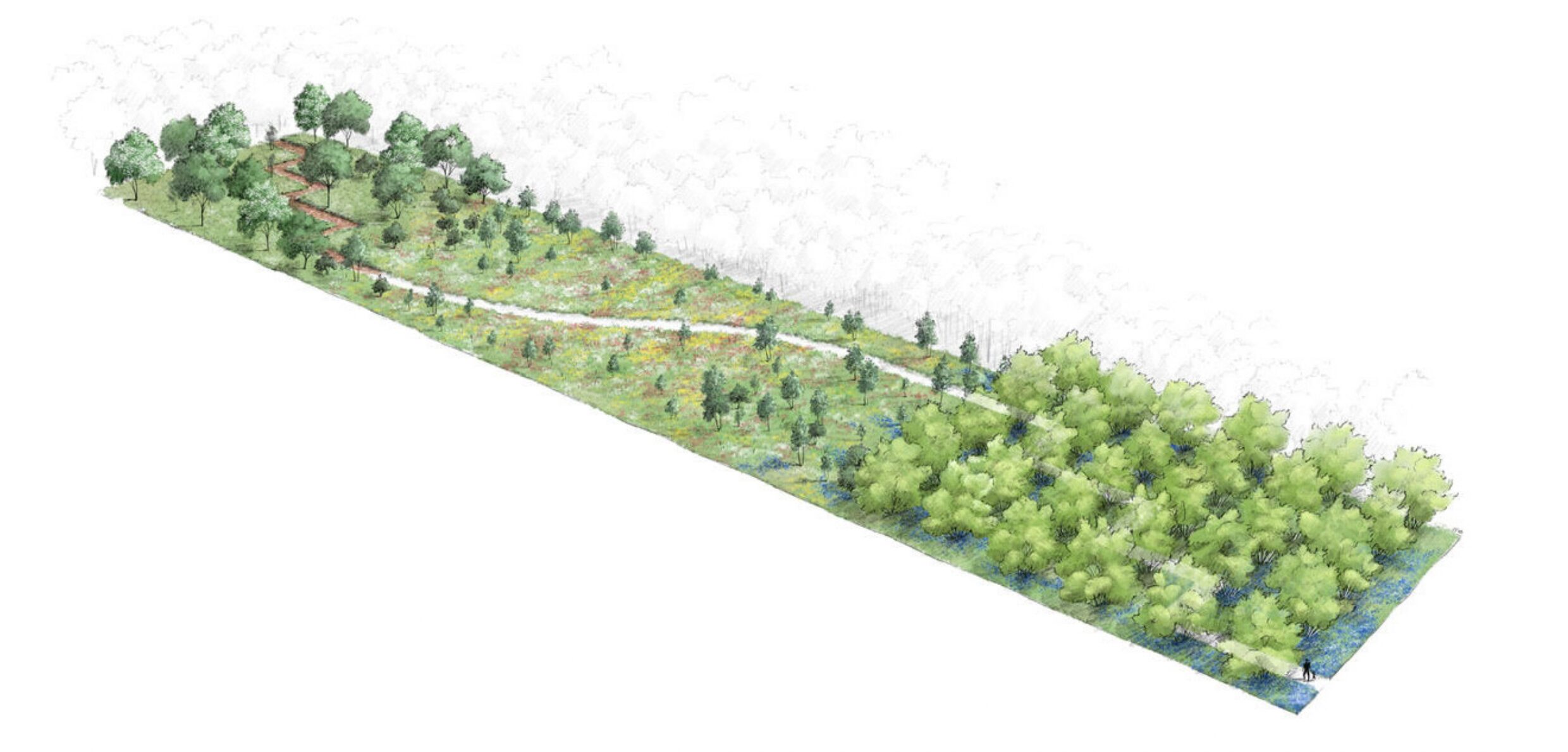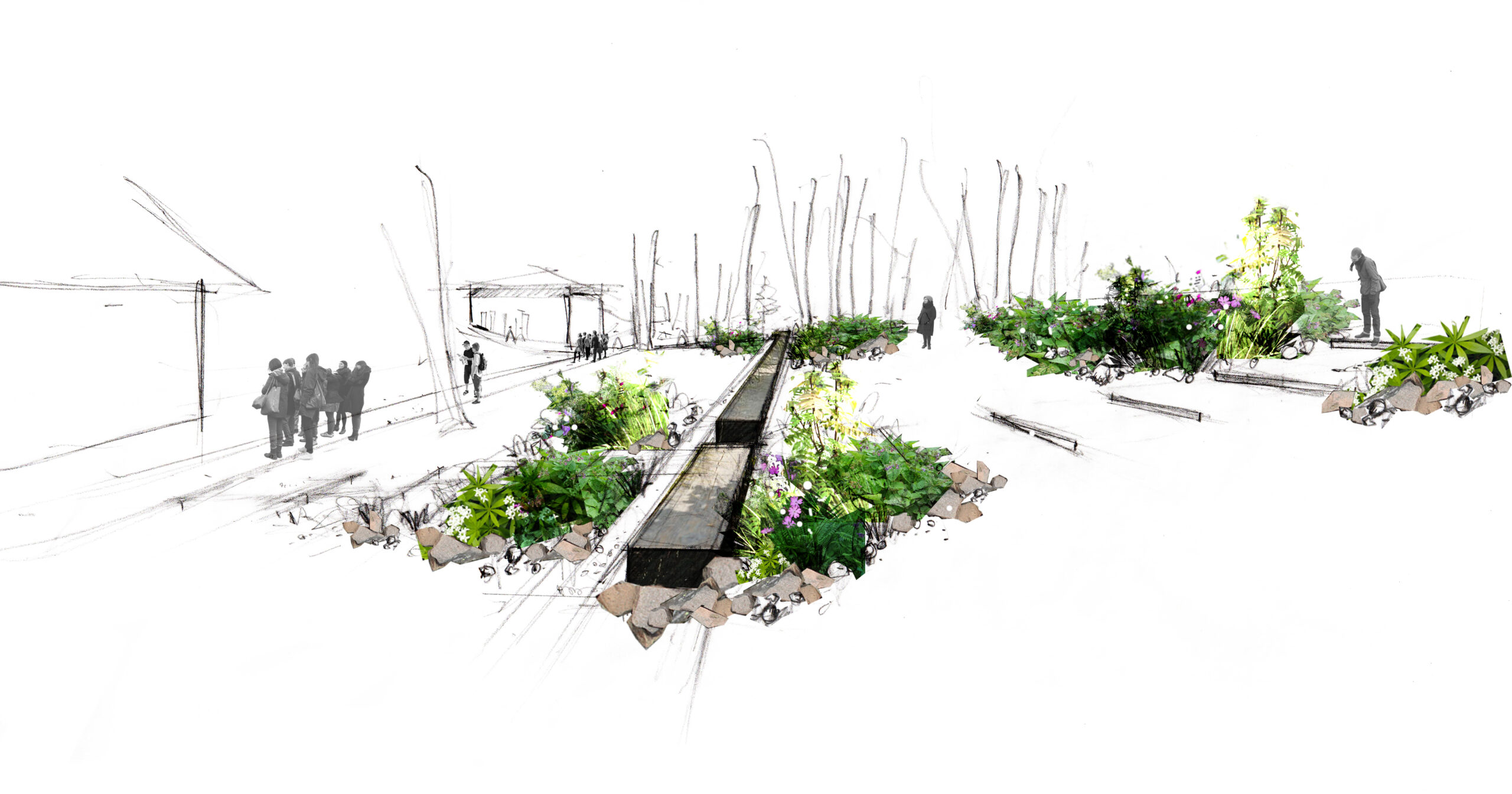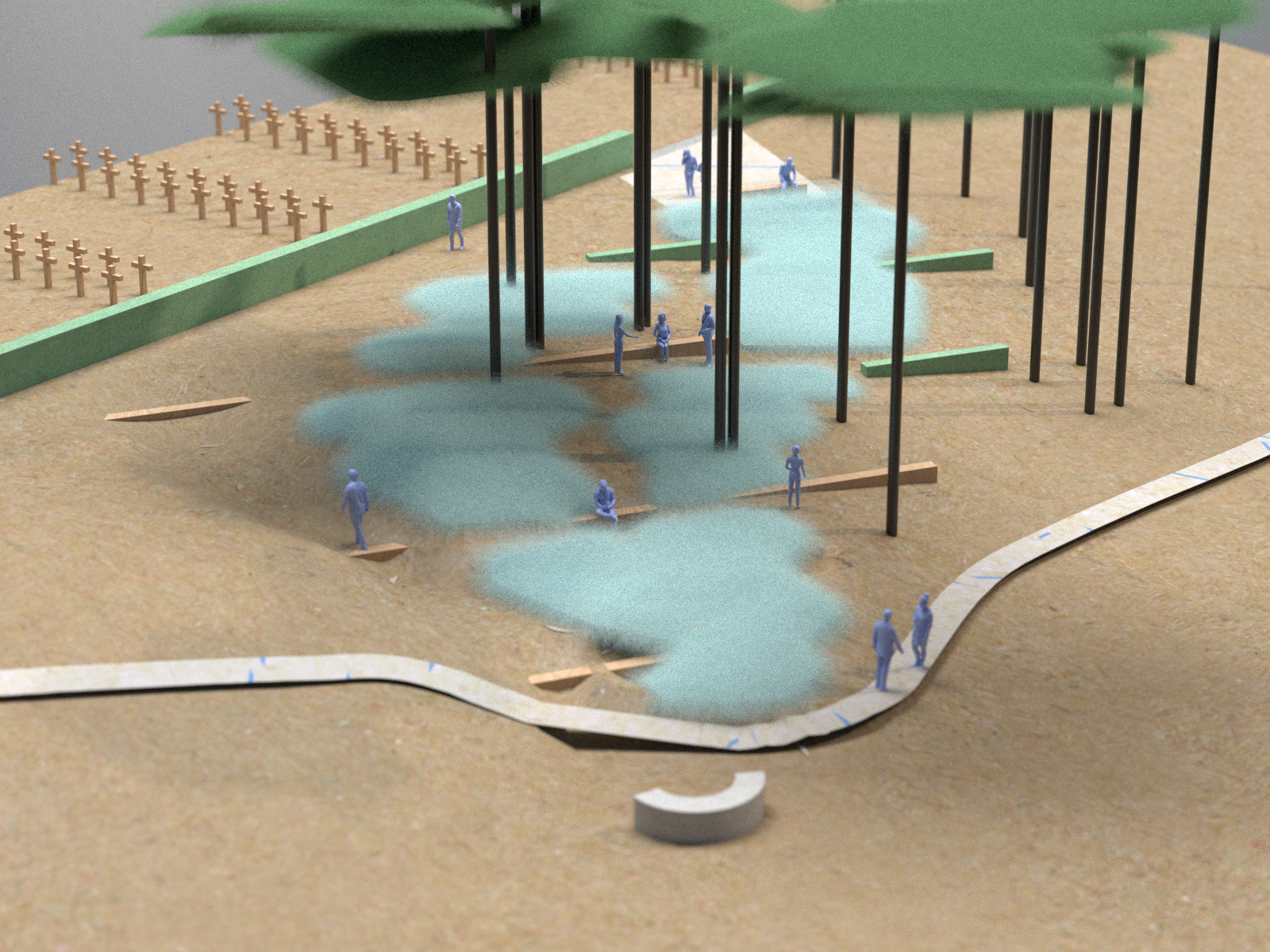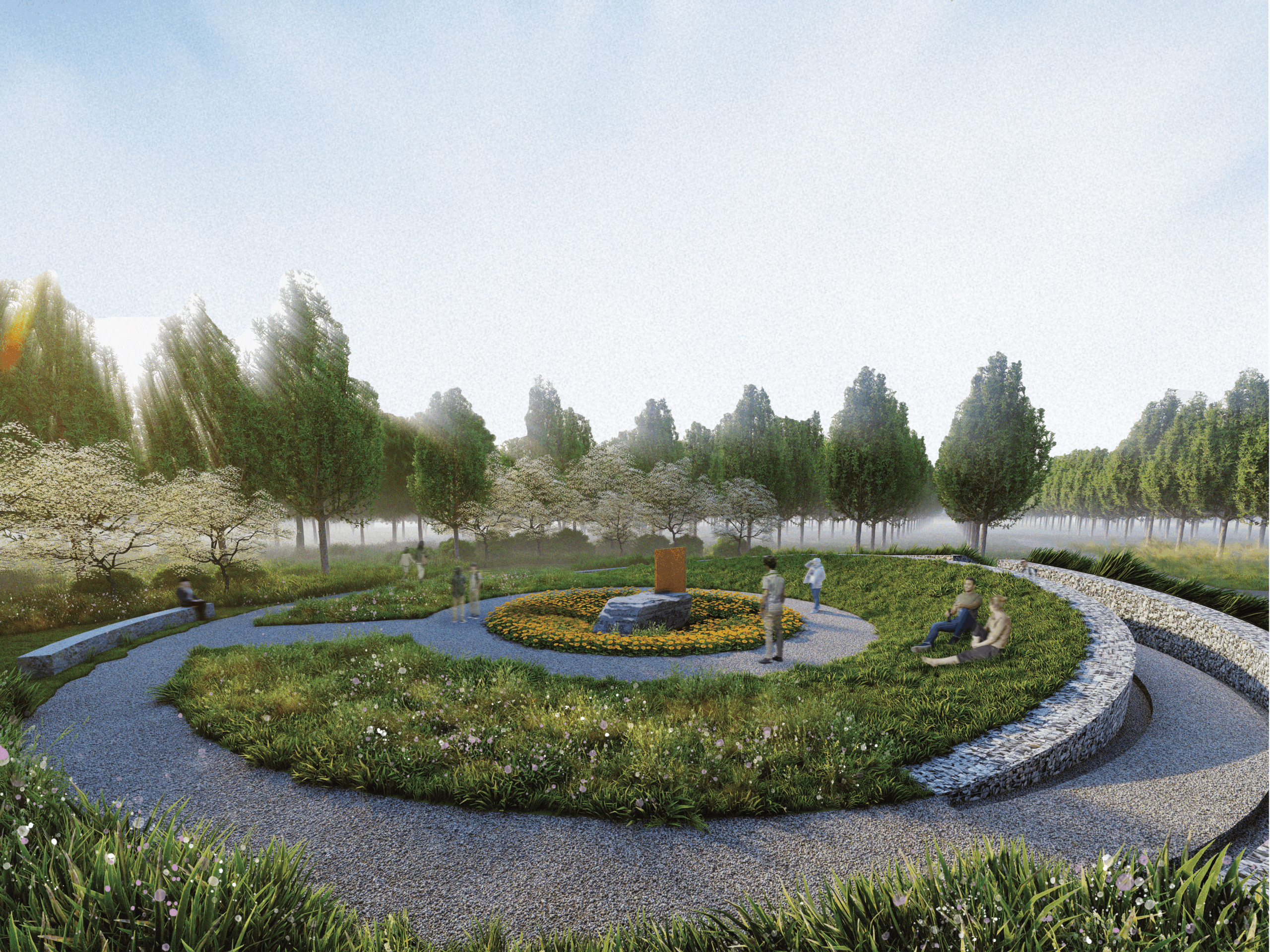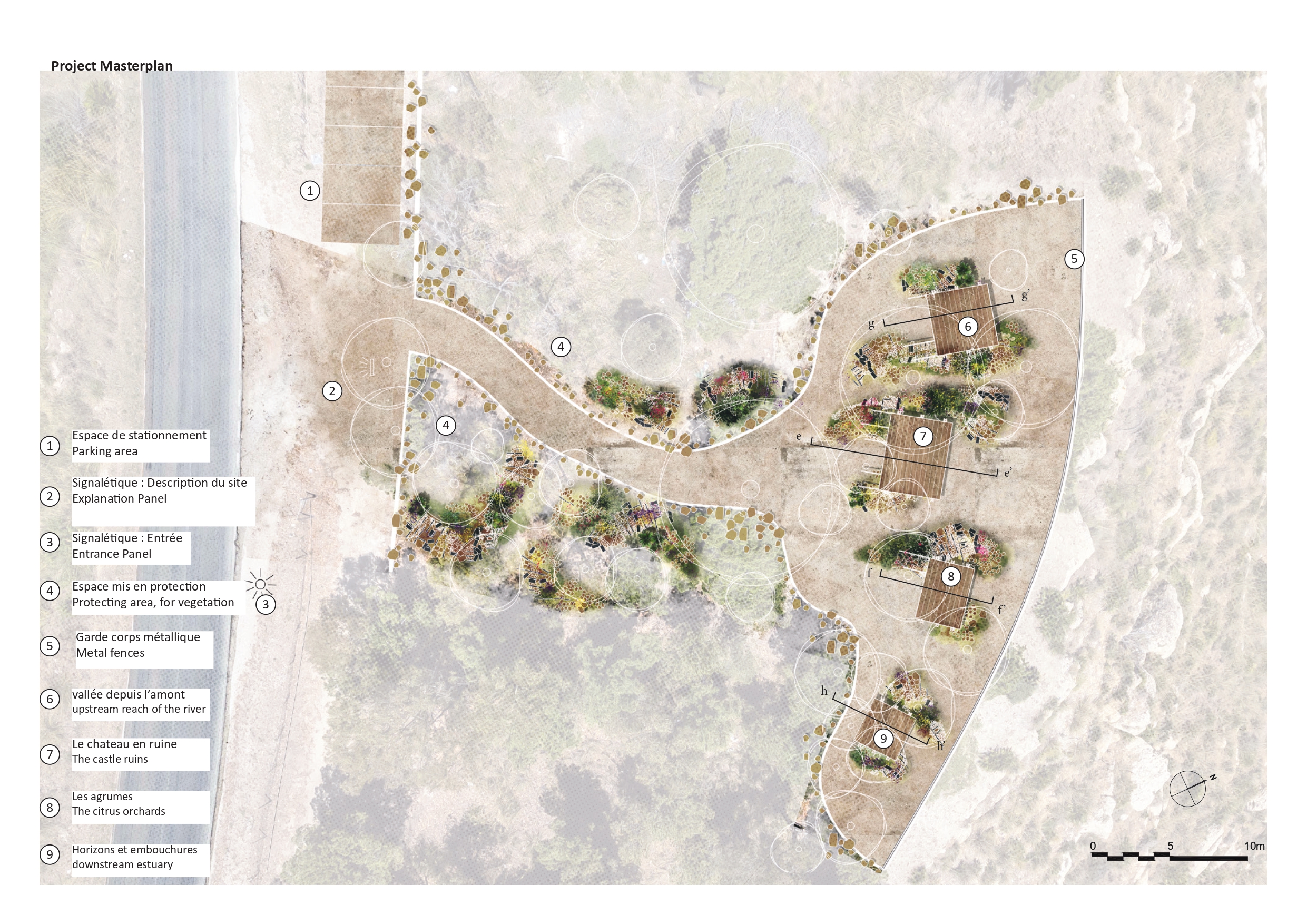
Situation and Context
The belvedere of the Castello di Poggiodiana, Ribera, reveals itself immediately upon crossing the road. After the first tree, the entire panorama is laid bare: vast empty terraces, a wooden railing, and an expansive view over the valley and the castle, perched on its rocky spur.
This openness, however, exposes a mismatch between scale and use. The space feels oversized for the number of potential visitors, and the full view is delivered at once—leaving little element of surprise and offering limited means to interpret the richness of the valley landscape.
And yet, the site holds remarkable potential. Its qualities deserve to be revealed progressively, allowing moments of surprise and a more nuanced understanding of both the territory and the landscape. The castle dominates the scene, of course, but on closer inspection one recognises a quintessential fragment of Sicily.
The meander of the Fiume Verdura creates a striking asymmetry: on the convex side, beneath the castle, a gently sloping cultivated hillside; on the concave side, below the belvedere, a steeply eroded cliff of yellow tuff. At the foot of the castle, citrus groves occupy the fertile river deposits—the human imprint on the valley’s rich soils. By contrast, the belvedere side supports arid vegetation, and beyond the road the land flattens into dry-farmed fields of the plateau.
The belvedere itself is dotted with pines and eucalyptus, offering shade and vantage points from which to read the valley. Around its edges, in this eroded and more hostile zone, lizards have claimed the terrain. The fractured rocks, carved by the river’s erosion, provide abundant habitats and help reveal the broader landscape. In this sense, the lizard becomes a metaphor for inhabiting the site: a discreet, watchful presence overlooking the farmer at work and the castle ruins.
The Project
Around the Rock – Belvedere di lucertole proposes a garden of belvederes: a sequence of viewpoints and reptilian habitats designed to interpret the landscape.
Drawing inspiration from the lizard’s rocky micro-habitat, the project creates a series of rock gardens along the cliffside, each coupled with a wooden terrace. Together, they offer a progressive reading of the valley and its castle. The aim is to shift perception of the site: no longer a single panoramic sweep revealed in an instant, but instead a staged discovery—idling between sun and shade, pausing at carefully framed vistas, like a lizard basking on stone.
Progressive Discovery
To transform the visitor experience, the ground itself is reworked.
-
A parking area is defined with gravel surfacing, restricting cars and campervans to the entrance zone.
-
Beyond, the soil is loosened, and rocks are set into place to create micro-habitats where vegetation can gradually recolonise.
-
Fine wooden fencing (ganivelle or mesh) protects planted areas from trampling.
-
The oversized terraces are removed, restoring the natural topography with delicate grading. Crushed gravel paths provide comfortable movement across the site.
Four Horizons: Landscape-Reading Devices
Four rock gardens are installed to anchor four distinct viewpoints. Each consists of a scatter of boulders of varied size, providing habitats for lizards and a planting palette of arid species, which bring seasonal colour and character.
Each rock garden is paired with a horizontal—a simple wooden terrace leaning into the rock. These terraces, with their visible joinery, reinforce the site’s raw aesthetic while serving as clear devices for reading the landscape.
The four horizontals mark:
-
The upstream valley — revealing the meander and its asymmetry: the cliff on one side, the sedimentary slope on the other.
-
The castle ruins — hewn from the same cliff stone, a historic marker where the Peace of Caltabellotta was signed in 1302.
-
The citrus groves — cultivated on the fertile river deposits below the castle.
-
The downstream valley — opening towards the river mouth and the distant horizon of the sea.
This reimagined belvedere shifts the site from an oversized, instantly consumed panorama to a carefully staged landscape experience—one that privileges observation, time, and discovery, and where the lizard becomes both guide and inhabitant of a renewed sense of place.


